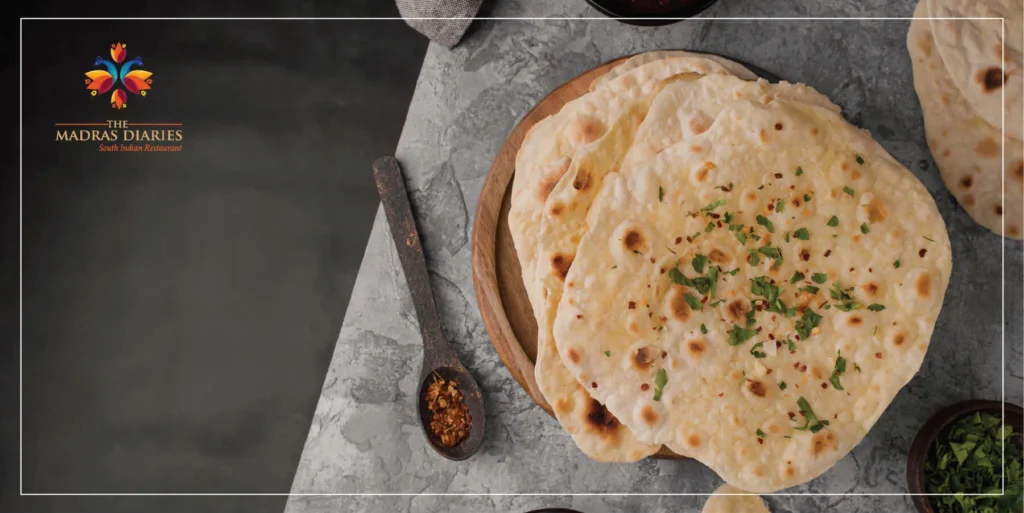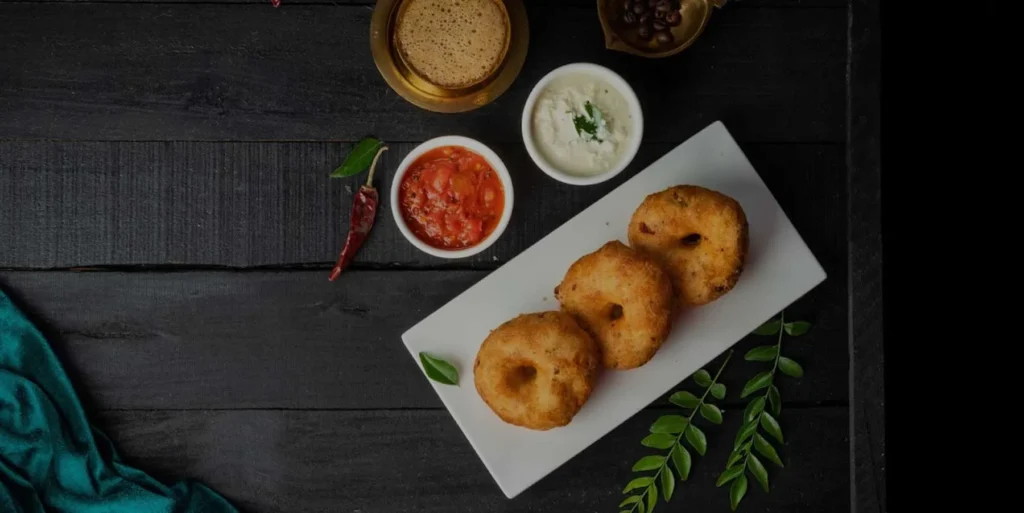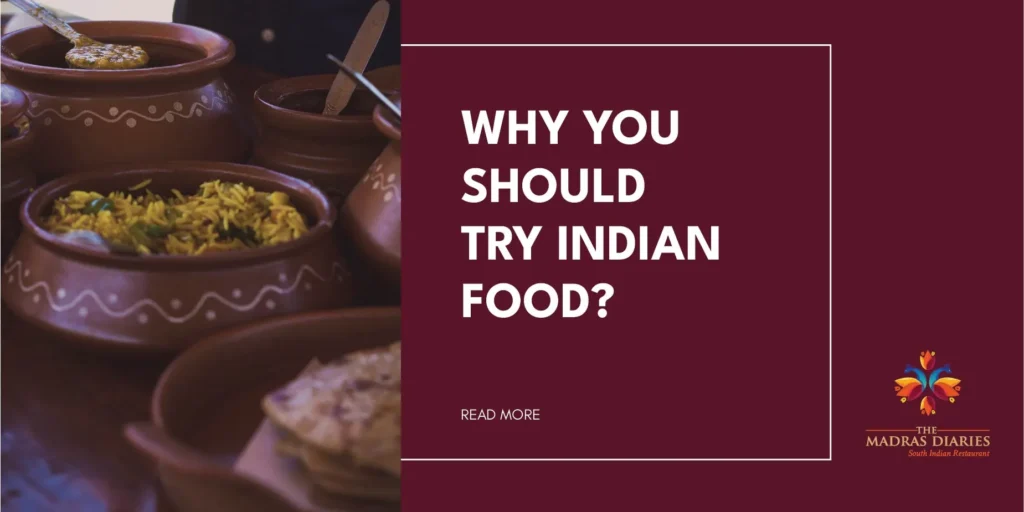Flatbreads are a staple of every Indian household. There are many Indian flatbreads, based on the region you visit in India. The varieties made of flour or wheat are Roti, chapati, Naan, paratha, and so on, and those made using rice and pulses like dosa, appam, pathiri, and so on. Any visitor to India cannot return without partaking in a meal of one of these flatbreads, lentils, and a curry of their choice.
The conventional flatbreads, usually preferred for breakfast and dinner in most northern parts of India, are Roti and Naan, and there are many varieties. These two flatbreads go with almost anything- roasted vegetables, scrambled eggs, chicken curry, lentils, and so on.
With the increasing popularity of Indian food in different parts of the world, these flatbreads could cause some confusion. In the simplest terms, Roti is a generic name for most Indian flatbreads made using wheat flour or all-purpose flour.
The tandoor is a barrel-shaped oven powered by burning coal, wood, or, in more modern kitchens, cooking gas or electricity. In many traditional kitchens, the tandoor is usually hot throughout the day, as people make Rotis for the day’s three meals. The tandoor, in varying shapes and sizes, is an essential part of an Indian restaurant’s kitchen.
To make the flatbreads, cooks wait till the inside of the tandoor is hot and press the flattened dough on the walls of the tandoor. They use a long skewer to bring the cooked Roti out of the tandoor. Usually, food cooked using a tandoor does not require oil, so it is a healthy addition to any meal.
The hot tandoor is also used to make kebabs and cook pieces of meat or paneer on a skewer- a traditional version of a barbeque. A coal fire in the tandoor gives the Roti or Naan a smoky flavour that adds to the bread taste.
Since we can cook Roti and Naan using a tandoor, how do we know the difference between these two Indian flatbreads? Let us look at some discerning factors.
Ingredients
First, we look at the ingredients when talking about the difference between these two pieces of bread. Roti is usually made using whole wheat flour, while Naan is made of refined all-purpose flour.
Roti is a popular dish in the northwestern part of India. The dough used in the preparation of Roti is made of unleavened whole wheat flour and warm water. There are no additional ingredients other than salt and, sometimes, oil. Since this goes into the tandoor, there is usually no need for extra oil as well.
Naan, on the other hand, is heavier than Roti. It requires leavening. This is made using refined flour or all-purpose flour. Given the varieties of Naan, we use some other ingredients during its preparation. Curd and butter are two of the favourite additions while making the dough for Naan.
A sprinkling of nigella seeds adds to the flavour burst. Most times, people favour stuffed Naan over the plain version. In this case, cheese, garlic, or even keema become a part of the list of ingredients.
Cooking Method
Tandoori Roti is a bread we can make in no time if there is a hot tandoor. The dough requires little preparation time. All you need to do is to mix whole wheat flour, salt, and some oil with enough water to knead into a soft dough. Once the dough is ready, you can separate it into small balls, roll them out until they are thin and flat, and keep the flat dough in the tandoor. Within minutes, you will have crisp, tasty tandoori rotis.
Naan requires a little more preparation time. After mixing the ingredients, flour, water, salt, and a leavening agent such as curd or yeast. Traditional recipes call for curd, as it also lends a slight tinge of sourness to the bread.
After making the dough, we let it rest for a few hours before cooking. This makes Naan soft. The dough rises and creates a pocket when it cooks. We make Naan using a tandoor or even an iron skillet. Once it is cooked, we add a generous dollop of butter.
Thickness
The two breads differ from each other in thickness as well. Naan, being fluffy, is thicker than Roti. Owing to this thickness, it is also denser in texture. On the other hand, Roti is soft but thinner than Naan, especially the phulka variety.
Variations
Tandoori Roti comes in different types, depending on how the dough is rolled out and how thick it is. The most common variants of Rotis are Missi Roti, chapati, phulka and rumali Roti. Usually, tandoori rotis do not have stuffing in them. They are enjoyed best with some clarified butter and gravy of your choice. These rotis are usually crisp and crunchy. For those who like softer rotis, opt for phulka and rumali roti versions of tandoori Roti.
The quintessential butter naan, which is on every Indian restaurant’s menu, also has many variations. Stuffed naan varieties include cheese or paneer naan, keema naan, Kashmiri naan, and garlic naan. Naan is usually softer than Rotis and less crunchy.
Nutritional Value
Since Indians consume these bread almost daily, we like to keep track of their calorie content. In many ways, the nutritional value of these two breads also justifies their popularity and frequency of use in Indian kitchens.
Roti has a significantly lower calorie content than Naan and is usually the food people eat daily. Naan, made with refined flour and higher calorie content, is reserved for special occasions, festivals, weekends, cheat days, or when the family has guests for meals.
People who like to watch their weight tend to opt for Rotis because they are made of whole wheat flour. With lesser oil, the tandoori Roti presents a crisp yet tasty option for health-conscious people.
Tandoori Roti also has almost zero cholesterol, as we do not use any saturated or trans fats while preparing the dough or during cooking. On the other hand, Naan uses ghee or butter in its preparation, so it has some saturated fats and cholesterol. Therefore, tandoori Roti, rich in protein, iron, dietary fiber, potassium, and other minerals, is the preferred everyday flatbread.
Both Roti and Naan go well with many Indian gravies and curries. They are the staples of Indian cuisine. To talk about their differences in terms of ingredients and flavour does not do justice to the dishes themselves. Dine with us at The Madras Diaries to enjoy the different types of Naan and Roti with the most sumptuous desi curries so you can relish the differences.



